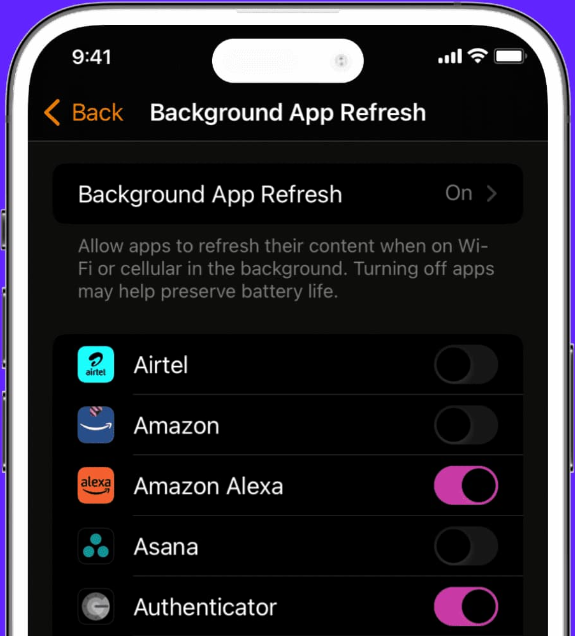In today’s smartphone-driven world, features like background app refresh play an important role in enhancing user experience. Whether you are using iOS or Android devices, understanding how background app refresh works can help you manage battery life, data usage, and overall phone performance. This guide explores its functions, benefits, drawbacks, and best practices to optimize your mobile device.
What is Background App Refresh?
Background app refresh is a feature that allows apps on your smartphone to update their content even when you are not actively using them. For example, your email app may fetch new messages, or a news app might update the latest headlines in the background. This ensures that when you open the app, fresh data is already available.
How Background App Refresh Works
When background app refresh is enabled, the operating system (iOS or Android) grants apps permission to run limited tasks in the background. These tasks include syncing updates, fetching notifications, and refreshing content. The system intelligently manages this process to balance battery life, network usage, and app performance.
Also, explore D2 Armor Picker: Maximizing Your Destiny 2 Loadout Efficiency
Benefits of Background App Refresh
Enabling background app refresh has several advantages for smartphone users:
- Instant Updates: Apps are always up to date with the latest information.
- Improved User Experience: You don’t have to wait for apps to load new data.
- Seamless Notifications: Messaging and social media apps deliver real-time alerts.
- Productivity: Calendar, email, and task apps stay synchronized without manual refresh.
- Enhanced Connectivity: Apps remain connected to services like cloud storage and GPS.
Downsides of Background App Refresh
Despite its benefits, background app refresh can have drawbacks if not managed properly:
- Battery Drain: Running multiple apps in the background consumes more power.
- Data Usage: Apps may use mobile data to refresh content when Wi-Fi is unavailable.
- Performance Issues: Slower phones may experience lag when too many apps refresh simultaneously.
- Privacy Concerns: Apps running in the background may access user information.
How to Manage Background App Refresh
Smart management of background app refresh can optimize your mobile performance. Here are practical tips:
- Turn It Off for Non-Essential Apps: Disable the feature for apps you rarely use.
- Use Wi-Fi Only Option: On iOS, you can restrict background refresh to Wi-Fi to save mobile data.
- Check Battery Usage: Monitor which apps consume the most energy and adjust settings accordingly.
- Update Apps Regularly: New app versions often optimize how background processes work.
- Enable Low Power Mode: On both iOS and Android, low power modes temporarily suspend background refresh to extend battery life.
Devices That Use Background App Refresh
- iOS Devices: iPhones and iPads allow users to enable, disable, or customize background refresh under Settings > General.
- Android Devices: While Android doesn’t use the exact term, similar features exist under battery optimization and background data settings.
- Wearables and Tablets: Smartwatches and tablets also use background syncing for apps like health trackers and cloud storage.
FAQs About Background App Refresh
1. What is background app-refresh?
It is a feature that lets apps update content in the background, ensuring they are ready with fresh data when opened.
2. Does background app-refresh drain battery?
Yes, constant refreshing can drain the battery, especially on older devices, but proper management reduces the impact.
3. Should I turn off background app-refresh?
It depends on your needs. For critical apps like email or messaging, keep it on. For others, disabling it saves battery and data.
4. Is background app-refresh the same as push notifications?
No, push notifications are server-driven alerts, while background refresh updates app content automatically.
5. How do I turn off background app-refresh?
On iOS, go to Settings > General > Background App Refresh. On Android, adjust background data and battery optimization settings.
Conclusion
In conclusion, background app-refresh is a useful mobile feature that enhances convenience by keeping apps updated in real time. However, it can also impact battery life, data usage, and device performance if not carefully managed. The key is to strike a balance—enable background app-refresh for essential apps while disabling it for those you rarely use. By doing so, you ensure your smartphone runs efficiently while still benefiting from real-time updates and seamless app performance.
